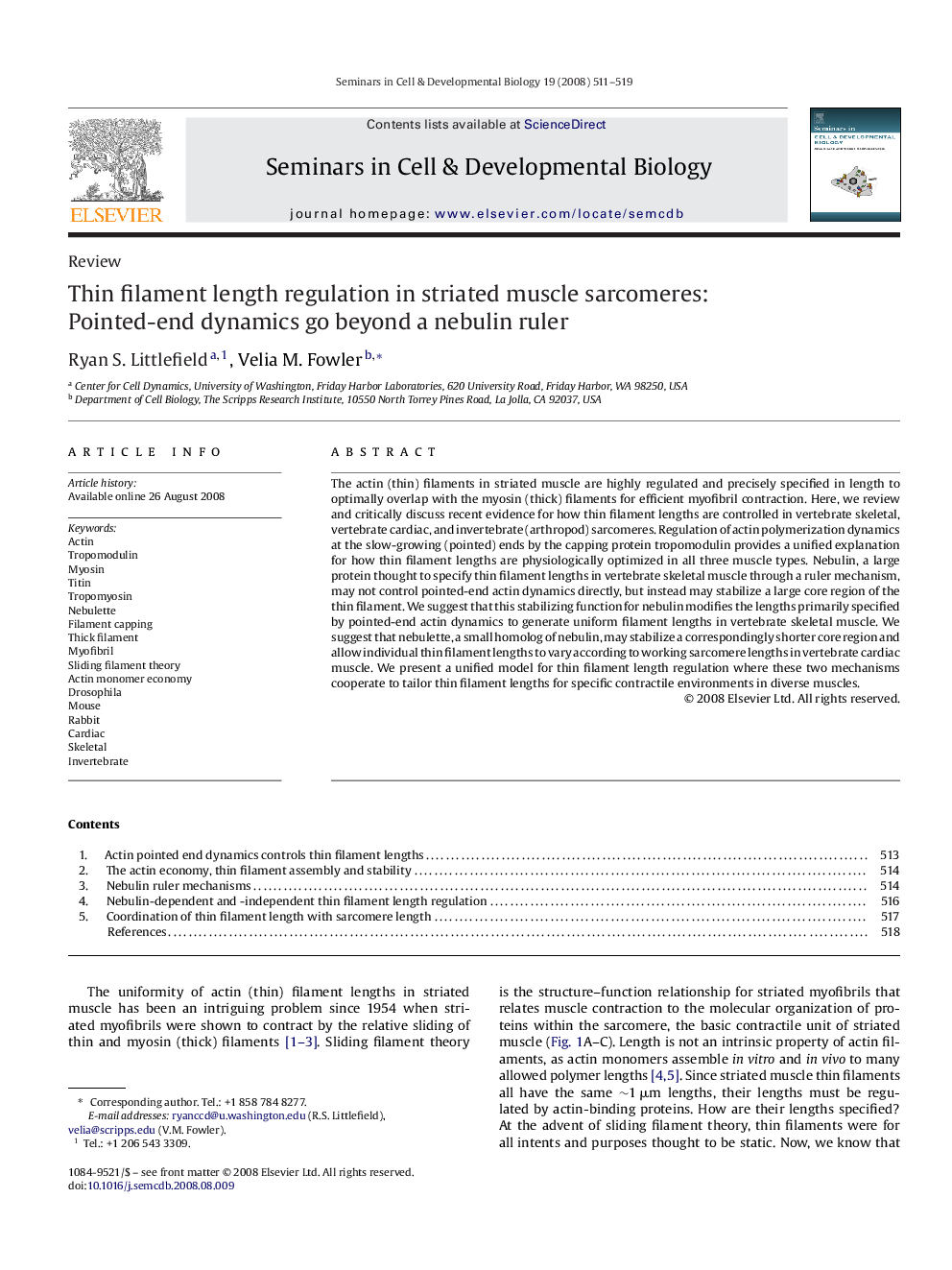| Article ID | Journal | Published Year | Pages | File Type |
|---|---|---|---|---|
| 2203209 | Seminars in Cell & Developmental Biology | 2008 | 9 Pages |
The actin (thin) filaments in striated muscle are highly regulated and precisely specified in length to optimally overlap with the myosin (thick) filaments for efficient myofibril contraction. Here, we review and critically discuss recent evidence for how thin filament lengths are controlled in vertebrate skeletal, vertebrate cardiac, and invertebrate (arthropod) sarcomeres. Regulation of actin polymerization dynamics at the slow-growing (pointed) ends by the capping protein tropomodulin provides a unified explanation for how thin filament lengths are physiologically optimized in all three muscle types. Nebulin, a large protein thought to specify thin filament lengths in vertebrate skeletal muscle through a ruler mechanism, may not control pointed-end actin dynamics directly, but instead may stabilize a large core region of the thin filament. We suggest that this stabilizing function for nebulin modifies the lengths primarily specified by pointed-end actin dynamics to generate uniform filament lengths in vertebrate skeletal muscle. We suggest that nebulette, a small homolog of nebulin, may stabilize a correspondingly shorter core region and allow individual thin filament lengths to vary according to working sarcomere lengths in vertebrate cardiac muscle. We present a unified model for thin filament length regulation where these two mechanisms cooperate to tailor thin filament lengths for specific contractile environments in diverse muscles.
